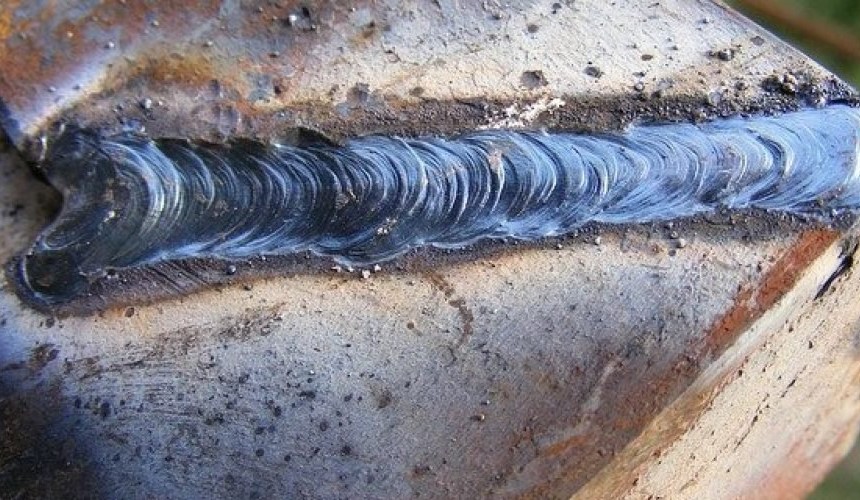Step-by-Step Guide to Preventing Weld Undercut in Different Metals
Wiki Article
Necessary Tips for Welders: Avoiding Undercut Welding and Ensuring Stronger Weld Joints
In the world of welding, achieving sturdy and solid weld joints is the foundation of creating high-grade job. One typical difficulty that welders usually experience is undercut welding, which can jeopardize the integrity of the weld joint.
Recognizing Undercut Welding
Undercut welding is an usual welding issue that takes place when the weld steel stops working to appropriately load the groove and leads to a groove-like clinical depression along the weld grain. This issue deteriorates the weld joint, making it susceptible to breaking and failure under anxiety. Damaging can be brought on by different aspects, including excessive welding existing, high welding rate, incorrect electrode angle, wrong electrode dimension, and inadequate welding method.One of the major factors for undercut welding is an imbalance in between the welding current and the welding speed. If the welding current is expensive or the welding rate is too quickly, the weld metal may not effectively fill up the groove, causing damaging. Furthermore, utilizing an electrode that is too huge can cause a similar outcome, as the excess steel can not properly flow right into the groove.
To stop undercut welding, welders must guarantee they are making use of the correct welding specifications, maintain an ideal electrode angle, choose the ideal electrode size, and practice appropriate welding methods. By resolving these elements, welders can decrease the danger of undercutting and create more powerful, more trusted weld joints.
Proper Welding Technique
Efficient welding strategy plays a critical role in making sure the top quality and honesty of weld joints. One essential facet of correct welding method is maintaining the right angle and range between the welding gun and the workpiece.Furthermore, a consistent and consistent hand movement is important for creating solid and resilient weld joints. Welders ought to go for smooth, consistent activities to ensure even distribution of the weld material. Correct manipulation of the welding gun and filler material is also key to achieving optimal penetration and blend.
In addition, regulating the warmth input and picking the ideal welding parameters based on the material being welded are vital consider accomplishing top quality welds - Preventing weld undercut. Welders ought to follow the recommended setups supplied by welding procedure specifications and readjust them as required based on the specific needs of the job. By grasping correct welding strategies, welders can substantially improve the strength and integrity of their weld joints
Selecting the Right Electrode
Maintaining the right angle and distance in between the welding gun and the work surface is essential when considering the relevance of choosing the appropriate electrode in welding applications. The option of electrode plays a vital role in establishing the quality and toughness of the weld joint. Electrodes come in numerous types, each developed for details functions and products.Firstly, picking the appropriate electrode diameter is crucial. Thinner electrodes appropriate for welding slim products, while thicker electrodes are better for thicker materials and greater warmth applications. Matching the electrode diameter to the thickness of the work surface helps attain a balanced weld.
Secondly, comprehending the material structure of the electrode is vital. Different electrodes are made for welding certain materials like steel, stainless steel, light weight aluminum, or cast iron. Making use of the right electrode product makes sure good combination and lessens the risk of defects in the weld.
Lastly, thinking about the welding position and technique is crucial when selecting the electrode kind. As an example, certain electrodes are better fit for vertical or overhanging welding positions, while others work well for level or straight settings. Selecting the ideal electrode based on the welding technique boosts the overall weld high quality and honesty.
Preparing the Base Steel
To guarantee a successful welding procedure, what preliminary actions go to this website should be taken when preparing the base metal for welding? In addition, any existing weld product or residue from previous welding need to be eliminated to make certain a clean surface area for the new weld.
Carrying Out Post-Weld Inspections

After carrying out these evaluations, welders have to compare the results versus sector criteria and task requirements to guarantee that the weld joint satisfies all needed standards. Any type of inadequacies or variances found throughout the post-weld assessment needs to be without delay dealt with through suitable restorative procedures to ensure the weld's stability. By vigilantly carrying out post-weld evaluations and quickly dealing with any kind of concerns, welders can maintain the high quality and dependability of their work, ultimately adding to i loved this the safety and security and long life of the bonded structures.
Conclusion

In conclusion, preventing undercut welding and making certain more powerful weld joints need a combination of correct welding method, selecting the right electrode, preparing the base steel properly, and conducting post-weld examinations. By comprehending the reasons for undercut welding and implementing the needed safety measures, welders can produce high-quality weld joints that fulfill industry criteria and make certain the architectural integrity of the bonded components.
Undercut welding is a typical welding problem that takes place when the weld metal falls short to correctly fill the groove and results in a groove-like clinical depression along the weld bead (Preventing weld undercut). Damaging can be caused by different factors, consisting of too much welding current, high welding speed, improper electrode angle, inaccurate electrode dimension, and poor welding method
One of the major reasons for undercut welding is a discrepancy in between the welding existing and the welding speed. If the welding current is as well high or the welding rate is too quick, the weld steel may not adequately fill up the groove, leading to undercutting.Keeping the correct angle and distance in between the welding weapon and the workpiece is fundamental when thinking about the relevance of choosing the appropriate electrode in welding applications.
Report this wiki page